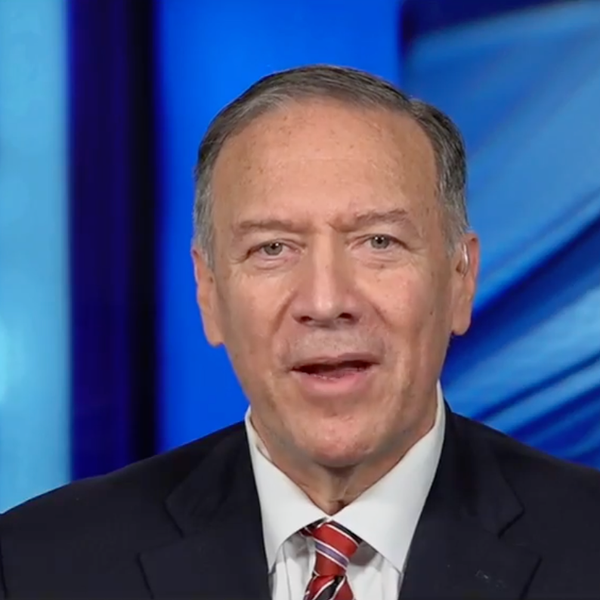The Trump administration has transferred thousands of acres of federal land along the U.S.-Mexico border to be controlled by the Department of Defense (DoD). The transfer is part of an ongoing expansion of the military’s presence along the border which the administration claims is necessary to “control” illegal immigration.
Critics of the land transfer, including some who live near the affected areas, have raised concerns about the environmental impact of military operations on these large swathes of land. Additionally, much of the land now under the jurisdiction of the military encompasses national parks and other federal lands which the public is losing access to.
The land that has been transferred to the DoD, called the Roosevelt Reservation, is a 60-foot-wide strip spanning roughly 170 square miles along the border. Already the Pentagon has used its newly acquired access to this land to establish National Defense Areas (NDAs) in New Mexico and Texas. These NDAs will function as expansions of Fort Huachuca and Fort Bliss, Army installations in Arizona and Texas respectively.
Since taking office, the administration has deployed thousands of forces to the southern border, including an initial wave of 1,600 soldiers and Marines in January, and the deployment of “a Stryker brigade combat team and a general support aviation battalion” in March. More than 2,000 reservists were already deployed at the border prior to President Trump’s return to office. Currently, much of the military activity consists of troops setting up fencing and razor wire, patrolling the border, and conducting surveillance to provide to Customs and Border Protection.
Melissa del Bosque, a co-founder of The Border Chronicle — a media outlet that provides on-the-ground reporting about border issues from communities in the borderlands — described what the military presence looks like on the ground.
“You see soldiers in full gear with rifles, military rifles,” del Bosque told Responsible Statecraft. “If you go to the Mexican side of the wall you’ll see murals and benches and people go running. Then on the U.S. side you see razor wire, military vehicles, soldiers.”
Transferring control of federal lands to the Department of Defense enables the administration to use the military for domestic law enforcement, an activity which would otherwise be unlawful under the Posse Comitatus Act, according to several legal scholars who focus on national security. Servicemembers operating within the NMNDA will have enhanced authorities, including authorization to “temporarily detain trespassers on the NMNDA until an appropriate law enforcement entity can assume custody,” “conduct cursory searches of trespassers on the NMNDA to ensure the safety of U.S. service members and Department of Defense (DoD) property,” and “conduct crowd control measures as necessary to ensure the safety of U.S. service members and DoD property.”
Border communities and conservationists raise concerns
By designating wide stretches of land as National Defense Areas, the administration is avoiding environmental reviews and public comment periods which have stalled or partially blocked other recent attempts by the military to acquire more land.
Southwest Conservation Advocate at the Center for Biological Diversity (CBD), Laiken Jordahl explained the scope of the land in New Mexico that is now within the jurisdiction of the Army.
“This is an area the size of many national parks,” Jordahl told RS. “A lot of this land abuts wilderness study areas and even a national monument. Most of that land is productive desert ecosystem teeming with biodiversity.”
A press release by the Sierra Club notes that the land transferred to the DoD includes parts of the Buenos Aires National Wildlife Refuge, Coronado National Memorial, and Organ Pipe National Monument. The release argues that “militarizing America’s parks is not the answer to any problem; doing so only prevents families and communities from freely and safely accessing our public lands,” adding that “communities and ecosystems will suffer irreversible harm if our borderlands become battlefields as the administration attempts to advance a false narrative that militarizing our parks is somehow necessary for national security.”
Research by The Nature Conservancy shows that all four states bordering Mexico are the four highest in species diversity, as well as some of the states with the most amount of species at risk of extinction. While the military presence at the border does not encompass all ecosystems in these states that are facing environmental risks, some of the areas within the United States where biodiversity is most at-risk can be found within the area of the Roosevelt Reservation.
Del Bosque worries that researchers will lose access to areas under the jurisdiction of the military.
“Biologists who have cameras down there, monitoring animals as they migrate, won’t be able to access those areas.” del Bosque told RS. “They’re going to be fenced off with ‘no trespassing’ signs, and if you're caught on that property, it’s a federal offense.”
Asked what access researchers, scientists, and conservationists will have to monitor the impact of military operations, an Army media relations officer told RS via email that, “Access requests will be adjudicated on a case-by-case basis.” The officer added, “sensitive environmental resource locations will be identified as ‘restricted areas’ where military operations should be avoided if practicable, and the Army will provide training on sensitive environmental resources and restricted areas.”
A statement from the Department of the Interior announcing the transfer of land to the DoD acknowledges, “these lands serve as habitat for 23 federally endangered species and are the home of cultural sites that range from small artifact scatters to large multi-room pueblos.” The statement goes on to say, “transfer of the management of this land to the Army will facilitate military engagement to prevent unauthorized human activity in ecologically sensitive areas along the southern border, which can be harmed by repeated foot traffic, unregulated vehicle use, and the creation of informal trails or camps.”
Jordahl argued that regular military activity in these areas poses a bigger environmental disruption.
“It’s doublespeak,” Jordahl said. “I spend a good amount of time out in a lot of these areas in New Mexico. They’re not high traffic areas, for one. And two, there’s no roads there. So, if they’re going to do increased patrols and increased militarization, we can only assume that’ll come with more structures, more vehicles, more roads, more lighting. Every aspect of the militarization has environmental impacts.”
Pictures from the DoD highlighting operations at the southern border show troops walking along a grassy, mountainous area in San Diego and a Stryker combat vehicle driving along roadless terrain in New Mexico.
 credit: US Army
credit: US Army
Jordahl added that he’s seen ranchers and hunters in the region — communities he said typically support strict border enforcement — express concern that they could lose access to land they rely on for their livelihoods and subsistence.
“The border’s a real place,” Jordahl said. “It’s an actual, physical place that has real species, real communities, real people living in it. Nothing about what’s happening on the border reflects or includes that at all.”
The Army responded to several questions about potential environmental consequences and disruption to communities that rely on access to these lands. The same media relations officer said that the Army is coordinating with the Bureau of Land Management (BLM).
The Army will “execute a memorandum of understanding with BLM for the conduct of land management operations,” the Army spokesperson said. “The Army will also coordinate with BLM to obtain geospatial data identifying the locations of sensitive environmental resources within the NMNDA.” The spokesperson added, “the Army is establishing a memorandum of understanding with BLM to enable BLM to continue to manage existing outgrants for third-party uses within the NMNDA, including existing agreements with ranchers and other public land users.”
The Trump administration has indicated that the Army’s jurisdiction over the National Defense Areas will last for three years at least.
Editor's note: This story has been updated to more accurately reflect the contents of the Sierra Club press release.
















